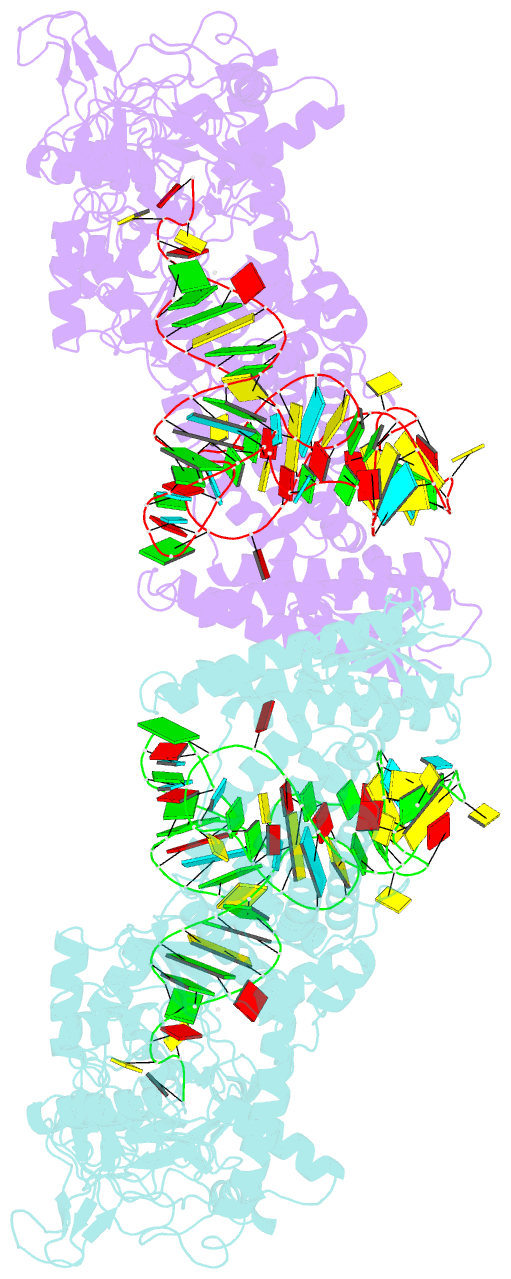Summary information and primary citation
- PDB-id
- 1ivs; SNAP-derived features in text and JSON formats;
DNAproDB
- Class
- ligase-RNA
- Method
- X-ray (2.9 Å)
- Summary
- Crystal structure of thermus thermophilus valyl-trna synthetase complexed with trna(val) and valyl-adenylate analogue
- Reference
- Fukai S, Nureki O, Sekine S-I, Shimada A, Vassylyev DG, Yokoyama S (2003): "Mechanism of molecular interactions for tRNA(Val) recognition by valyl-tRNA synthetase." RNA, 9, 100-111. doi: 10.1261/rna.2760703.
- Abstract
- The molecular interactions between valyl-tRNA synthetase (ValRS) and tRNA(Val), with the C34-A35-C36 anticodon, from Thermus thermophilus were studied by crystallographic analysis and structure-based mutagenesis. In the ValRS-bound structure of tRNA(Val), the successive A35-C36 residues (the major identity elements) of tRNA(Val) are base-stacked upon each other, and fit into a pocket on the alpha-helix bundle domain of ValRS. Hydrogen bonds are formed between ValRS and A35-C36 of tRNA(Val) in a base-specific manner. The C-terminal coiled-coil domain of ValRS interacts electrostatically with A20 and hydrophobically with the G19*C56 tertiary base pair. The loss of these interactions by the deletion of the coiled-coil domain of ValRS increased the K(M) value for tRNA(Val) 28-fold and decreased the k(cat) value 19-fold in the aminoacylation. The tRNA(Val) K(M) and k(cat) values were increased 21-fold and decreased 32-fold, respectively, by the disruption of the G18*U55 and G19*C56 tertiary base pairs, which associate the D- and T-loops for the formation of the L-shaped tRNA structure. Therefore, the coiled-coil domain of ValRS is likely to stabilize the L-shaped tRNA structure during the aminoacylation reaction.





